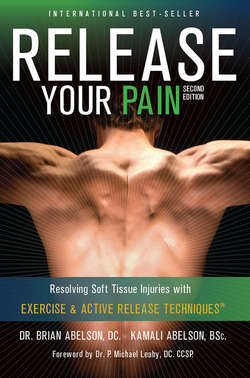Читать книгу Release Your Pain: 2nd Edition - EBOOK - Dr. Brian James Abelson DC. - Страница 41
На сайте Литреса книга снята с продажи.
Anterior and Lateral Muscles of the Neck
ОглавлениеFig 6.3: Sternocleidomastoid muscle of the
Sternocleidomastoid - This large superficial muscle is connected to the sternum, clavicle, and skull. It acts to elevate (or lift) the sternum and collar bone and participates in the lateral flexion, extension, and rotation of the neck. Restrictions in this muscle often refers pain to the jaw, head and sternum. Problems with this muscle are often related to headaches and even balance issues.
Rectus Capitis Lateral and Anterior - Works to laterally flex the head.
Longus Capitis - Works to straighten the upper neck and participates in forward and lateral flexion of the neck.
Longus Colli - This deep muscle flexes the neck, straightens the spine, and assists in lateral flexion of the head. Restrictions in this muscle can cause difficulty in swallowing and affect speech. This muscle is often injured during whiplash injuries.
Scalenes - This superficial layer of muscles extends through the front, centre, and back of the neck. They function in lateral flexion and rotation, and work to elevate the first three ribs during inhalation, allowing the lungs to expand. This muscle is commonly involved in several nerve entrapment syndromes including Carpal Tunnel Syndrome. In fact, restrictions in the scalenes are often the cause of upper back, chest, shoulder, arm, wrist, or even hand pain.
Fig 6.4: Scalene muscles of the neck.
The longus colli, scalenes, and longus capitis all work together to stabilize the cervical spine. and are frequently injured during whiplash accidents.
